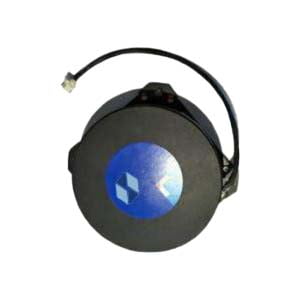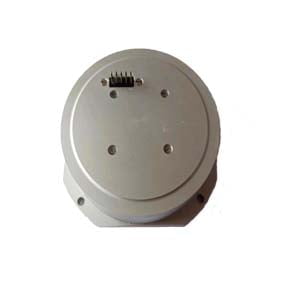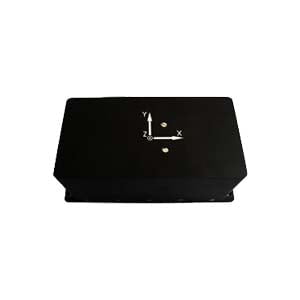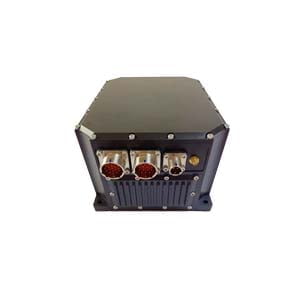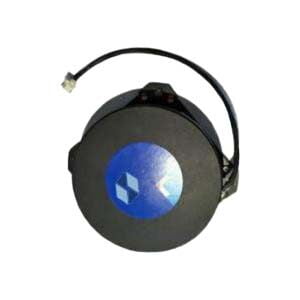Working principle
The realization of the fiber optic gyroscope is mainly based on the theory of Segnick: when the light beam travels in a circular channel, if the circular channel itself has a rotational speed, then the time required for the light to travel along the direction of rotation of the channel is more than the time required to travel along the opposite direction of the channel. That is to say, when the optical loop rotates, in different directions of travel, the optical path of the optical loop will change relative to the optical path of the loop at rest. Using this change in the optical path, the phase difference or interference fringe change of the two optical paths can be detected, and the rotation angular speed of the optical path can be measured, which is the working principle of the fiber optic gyroscope.
Performance parameter
1. Zero bias and zero drift
Zero bias is the output of the gyroscope when the input angular velocity is zero (i.e. the gyroscope is at rest), expressed as the equivalent input angular velocity corresponding to the average output value measured within a specified time, ideally the component of the Earth's rotation angular velocity. Zero drift is zero bias stability, indicating the degree of dispersion of the gyroscope output around its zero bias mean when the input angular rate is zero, expressed by the equivalent input angular rate corresponding to the standard deviation of the output in a specified time. Zero drift is the most important and basic index to measure the accuracy of FOG(fiber optic gyro). The main factor of zero drift is the non-reciprocal phase shift error introduced in the fiber coil by the ambient temperature variation. In order to stabilize zero drift, temperature control or temperature compensation of IFOG is often required. In addition, polarization will also have a certain influence on zero drift. In IFOG, polarization filtering and polarization-maintaining fiber are often used to eliminate the influence of polarization on zero drift.
2. Scale factor
Scale factor is the ratio of the output of the gyroscope to the input angular rate, which can be expressed by a specific linear slope on the coordinate axis. It is an index reflecting the sensitivity of the gyroscope, and its stability and accuracy are an important index of the gyroscope, comprehensively reflecting the test and fitting accuracy of the fiber optic gyroscope. The stability of the scale factor is dimensionless and is usually expressed in parts per million (ppm). The error of the scale factor mainly comes from the temperature change and the instability of the polarization state of the fiber.
3. Random walk coefficient
A technical index to characterize the white noise of the angular velocity output in a fiber optic gyroscope, it reflects the uncertainty of the angular velocity integral of the fiber optic gyroscope output over time, so it can also be called an angular random walk. The random walk coefficient reflects the development level of the gyroscope, and also reflects the minimum detectable angular rate of the gyroscope. The error is mainly due to random spontaneous emission of photons, noise and mechanical jitter introduced by photodetector and digital circuit.
4. Threshold and resolution
The threshold indicates the minimum input rate that a fiber optic gyroscope can sense. Resolution represents the minimum input rate increment that a gyroscope can sense at a specified input angular rate. Both threshold and resolution characterize the sensitivity of a fiber optic gyroscope.
5. Maximum input angular speed
Represents the maximum input rate of the gyroscope in the positive and negative directions, and represents the dynamic range of the gyroscope, that is, the rate range of the fiber optic gyroscope can be induced.
Military applications
The fiber optic gyroscope has a wide range of applications in the military because of its superiority in angular rate and acceleration measurement and its significant advantages in dynamic range, sensitivity, and reliability. It can be used for positioning, orientation, and navigation of tanks, submarines, self-propelled artillery, and armored assault vehicles. When satellite navigation is unable to obtain accurate information due to strong electronic interference, fiber optic gyros can be used to ensure autonomous navigation, precise guidance, and accurate target hitting of the aircraft. At the same time, the FOG component is also an important part of the aviation fire control system. It can be used to stabilize the aiming and firing lines of weapon systems such as armed helicopters, ensuring that weapons can search, aim, track and shoot in motion. In addition, fiber optic gyro is also the only effective navigation technology underwater, which can be used for positioning, orientation and navigation of submarines.
Civil applications
In the civil field, it mainly focuses on the application of medium and low-precision fiber optic gyroscopes. The main applications are: automatic navigation, positioning, and vehicle control of ground vehicles; attitude control of agricultural aircrafts, seeding and spraying of pesticides; and finding damage in underground engineering maintenance Positioning tools and rescue tools for the location of power lines, pipelines and communication optical (electrical) cables; used for geodetic surveys, mineral exploration, petroleum surveys, petroleum drilling guidance, tunnel construction, etc., and path surveys, and the use of fiber optic gyro rotation angles And linear displacement to achieve dam tilt survey.
If you want to get more details about fiber optic gyroscope, please visit https://www.ericcointernational.com/gyroscope/fiber-optic-gyroscope/
More Technical Questions
1.How is the fiber optic gyroscope used in military and civilian applications?
2.Application of Fiber Optic Gyroscope North Finder
3.Application of Fiber Optic Gyroscope in North Seeking System
4.Detailed Explanation of FOG Parameters
5.Principle and Application of Fiber Optic Gyroscope
6.Operation of a Fiber Optic Gyroscope
Products in Article
